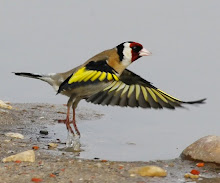
 One of the standard air routes between Athens and western Europe takes a path just west of the Albanian coast. If you are seated on the right side of the airplane, you can see the city of Vlorë (italian: Valona, greek: Αυλών). The Bay of Vlorë is bound by the characteristic Karaburun peninsula, beyond the tip of which lies the small island of Sazan (it. Saseno, gr. Σάσων - Sáson).
One of the standard air routes between Athens and western Europe takes a path just west of the Albanian coast. If you are seated on the right side of the airplane, you can see the city of Vlorë (italian: Valona, greek: Αυλών). The Bay of Vlorë is bound by the characteristic Karaburun peninsula, beyond the tip of which lies the small island of Sazan (it. Saseno, gr. Σάσων - Sáson).This tiny island, who has an area of just 5.70 km2, is a very fascinating curiosity in modern greek history, as it is one of the rare instances when Greece voluntarily ceded any of its territory (in 1914, to Albania). I first learned about this from my father when I was a teenager, and since then, every time I fly past it I think of the strange fate of Sazan.
Σασώ, as it was known in antiquity, was already mentioned by Polybius in a military episode taking place in 215 BC. Part of the Roman and Byzantine empires, it was captured by the Anjou of Naples in 1279, and was held by Albanian lords in the 1300s, often under the protection of Venice. The Ottoman Turks captured it around 1400, but it belonged to the Venetians by 1696. From then on, it follows the fate of the Ionian Islands, which were eventually given to Britain in 1815 as an autonomous republic under British protection.
 In 1864 the Ionian Islands were given to Greece. That's when Sáson/Sazan becomes de jure part of the greek state. However, Greece did not try to make its presence felt on the uninhabited island at that point, and never tried to occupy it. In fact, Ottoman Turkey reestablished its presence there by building a lighthouse in 1871. During the Balkan Wars, the greek navy captured Sáson on 8 November 1912, almost fifty years after it was legally transfered to Greece. In early 1914 though, after the great powers finalized the borders of the newly independent Albania, Greece was asked to cede the island to Albania. The greek government introduced the relevant law proposal (of just two articles) to Parliament, which voted on it on 28 May and published it on 7 June. The greek guard of twenty-five soldiers left the island on 2 July 1914. Thus ends the greek presence on Sazan.
In 1864 the Ionian Islands were given to Greece. That's when Sáson/Sazan becomes de jure part of the greek state. However, Greece did not try to make its presence felt on the uninhabited island at that point, and never tried to occupy it. In fact, Ottoman Turkey reestablished its presence there by building a lighthouse in 1871. During the Balkan Wars, the greek navy captured Sáson on 8 November 1912, almost fifty years after it was legally transfered to Greece. In early 1914 though, after the great powers finalized the borders of the newly independent Albania, Greece was asked to cede the island to Albania. The greek government introduced the relevant law proposal (of just two articles) to Parliament, which voted on it on 28 May and published it on 7 June. The greek guard of twenty-five soldiers left the island on 2 July 1914. Thus ends the greek presence on Sazan. That was not the end of the story, by the way. Italy took possession of the island in 1920 and kept it through World War II. It was formally restored to Albania in 1947, and was used as a base of the Soviet navy until 1961. It is currently used by Albania and the Italian coast guard in their efforts against illegal migration and contraband traffic.
That was not the end of the story, by the way. Italy took possession of the island in 1920 and kept it through World War II. It was formally restored to Albania in 1947, and was used as a base of the Soviet navy until 1961. It is currently used by Albania and the Italian coast guard in their efforts against illegal migration and contraband traffic.So, next time you fly near Sazan, think of all its adventures, and, especially if you are greek, of its strange fate! (The photo of Vlorë, the Karaburun peninsula, and Sazan was taken during a flight from Athens to London).
Sources
Σπυρίδων Λάμπρος, Η νήσος Σάσων, Νέος Ἑλληνομνήμων, τόμος 11, σελ. 57-93 (1914).
Petrit Nathanaili, L’ île de Sazan (Saseno), Balkanologie, vol. VI, no 1-2, p. 41-46 (2002).
L'occupazione dell'isola di Saseno ed i reati commessi sull'isola, Prassi Italiana di Diritto Internazionale.
Wikipedia: Sazan Island (in english), Saseno (in italian).












